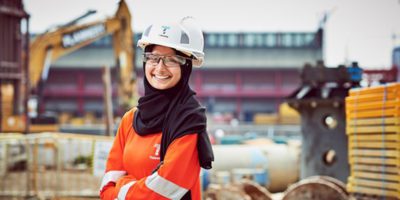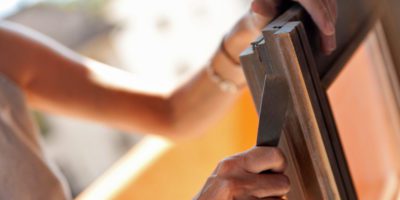Vaila Morrison is an architect with a passion for inclusive design and sustainability. She is not currently practicing as she is also a mum and carer to a young daughter with significant disabilities (attributed to an undiagnosed neurological condition), and a young son. Vaila is busy working on Our Inclusive Home, a project which encourages architects and designers to produce places and spaces which will welcome people of all needs.

“…I’m really excited about a number of organisations who have ‘got it’ and have made commitments to install Changing Places toilets in their new stores / venues, or locations where there are to be major refurbishment programmes…”
Enormous need for inclusive and accessible design
I’m a (non-practicing) architect with a long-held passion for sustainable design, particularly from an environmental perspective. I have more recently recognised just how under-represented inclusive and accessible design are in what should be a holistic approach to sustainability and I want to do something about that.
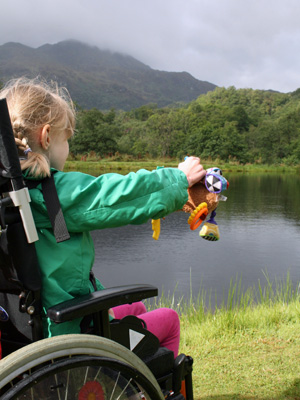
My design background is primarily in housing design, of varying scales, from home alterations and extensions to new build developments and housing estate regeneration projects, working in practice in London, Cambridge and Glasgow.
Now primarily a mum and carer to my little girl EJ (who has a rare genetic condition resulting in developmental disabilities) and my little boy, I have a new personal perspective on the need for thoughtful accessible design, of the gaps in the system and lack of inspiration. This prompted me to begin a website (www.theinclusivehome.co.uk) to share our family’s experiences of accessibility and also to explore and share ideas on the inclusive design of places, spaces, buildings and products.
Advocating for the Changing Places campaign
Personally, it involves a lot of writing about and talking about toilets! Not something I’d really choose to talk about if I’m honest, but if people don’t, and just carry on making do or staying home (as in the past) it’s something that can be (and still is being) overlooked, even in the big and most famous of venues.
The changing places campaign exists because regular accessible (disabled) toilets are not suitable for everyone’s needs and yet that is really the only type of accessible toilet that most people are aware of.
If you need a bit of help in the loo, have a large wheelchair, need somewhere to lay down to have a pad changed and / or need to use a hoist to transfer from your wheelchair to the change bench or toilet, then a standard accessible loo just isn’t actually accessible.
Since 2009 there has been an entry in the British Standards for the Changing Places toilets, but as yet there are just only over 1000 registered in the whole of the UK (for some context there are 2,618 regular toilets (male, female, accessible and one Changing Places toilet) in Wembley Stadium alone!)!
Campaign progress
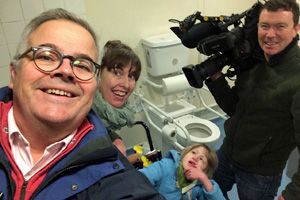
There have been some exciting flurries of mainstream media coverage over the last year, which will hopefully help to add some momentum to the campaign! There have been various newspaper articles as well as some local TV news, and indeed national, features, including this piece by Anne Wafula-Strike on the Victoria Derbyshire Show. In fact, EJ and I dabbled ourselves with our 15 (or perhaps more like five) minutes of fame on our own local BBC Look East news station earlier this year!
Last year you may remember I was encouraging readers to comment on the Woman & Equalities Committee inquiry into Disability & the Built Environment? This report was published earlier this year and had many encouraging recommendations for building access, including some on Changing Places toilets. The report recommends a new entry in the building regulations for Changing Places toilets in large public buildings. Very welcome comments!
There was also a draft of document of BS 8300 (the British Standard Institute’s document for access in the built environment) published for consultation over the summer. I have to admit I was more than a little disappointed in the Changing Places toilet entry as there really wasn’t much change to the previous revision.
I feel there needs to be greater clarity on where changing places toilets are expected and also flexibility in the standard, providing guidance for those venues who want to improve accessibility but, for whatever reason, can’t meet the full BS standard. It will be interesting to see the final publication next year.
Organisations leading the way in making facilities accessible
I’m really excited about a number of organisations who have ‘got it’ and have made commitments to install Changing Places Toilets in their new stores / venues, or locations where there are to be major refurbishment programmes.
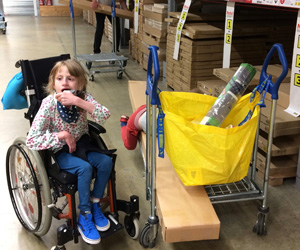
Some of our family’s personal favourites like IKEA, the National Trust and the RSPB are beginning to make some changes (this will of course take some time, so do check the changing places consortium map before going along)!
Of the more stand-alone tourist attractions, the Eden Project has been ahead of the game for a while and is very accessible generally, and this year Alton Towers decided to install, not one, but two new toilets with changing bench and ceiling hoist for visitors.
A number of supermarkets have begun ‘trials’ in some of their larger stores (although many campaigners are wondering what a ‘trial’ for a toilet means? Going to the loo is a proven need after all!). Fingers crossed the ‘trials’ are a success…
Despite this headway, there are a number of sectors where the campaign doesn’t seem to be making much impact. The sector I find most disappointing is for entertainment venues / auditoria like theatres and cinemas, as these are both activities that disabled people should be able to enjoy on completely equal terms as non-disabled people.
There has also been much buzz around relaxed performances and ‘autism friendly’ screenings, which would be perfect for families like ours! EJ is very sensory and loves lights and music, but without somewhere she can go to the loo it’s not really possible as we may have to up and leave completely halfway through a performance.
Even many hospitals still don’t have toilets of this type for outpatients, so although progress is being made, even locations where you’re likely to have a high number of ill, elderly and / or disabled people, suitable toilet facilities still are not a given.
Difference to families’ quality of life
The difference Changing Places toilets make to families quality of live can be summed up in two words: independence and inclusion.
I feel that this is often seen as an individual problem but it impacts on whole families. Thinking of the need to cater for disabled people as a minority, detached from the rest of the population. Of course, as you know, this is not the case! We are families, groups of friends or even formal groups with employed care workers (who cannot lift those they are responsible for without appropriate equipment).
Lack of suitable toilets can mean the difference between people going somewhere, only being able to nip out for short trips (between loo breaks) or be completely isolated at home. Our family are on the cusp of this. Currently we can just about manage to change EJ if we need to, either in the car or in a baby change room, but we know our days are numbered on that.
It’s not just EJ’s toileting needs that are compromised either. If I am on my own with the kids (most of the time), as EJ’s currently got a very small compact wheelchair, we can just about all fit into an accessible loo, for me and my son to use the loo, but soon it will become really tricky for me or the little guy to go to the toilet at all as we can’t just ‘park’ EJ somewhere on her own!
Advice for smaller organisations with limited resources to install Changing Places facilities
There’s no getting around the fact that the BS standards are written in a way that makes Changing Places seem like a very large and expensive extra for smaller businesses for a small minority of customers. I want to challenge that.
For smaller organisations I’d really love to see some complementary guidance being published to enable them to upgrade their accessibility.
What I’m not sure is completely clear in the current guidance, is that the Changing Places toilet standard is deemed to be additional to provision of a regular accessible toilet. This is because the Changing Places toilet has a peninsular toilet (a toilet centred in room to enable carers to help someone on and off the loo), rather than a corner toilet (which enables an independent wheelchair user to transfer to the loo using wall mounted grab rails next to the WC pan).
For the smaller venue, I believe there are other design solutions that would meet in the middle somewhere between these two standards. I also believe there is a more inclusive design solution in which the ‘changing’ aspect could suit both disabled people and families of young children, such that they are no longer deemed such a specialist (i.e. minority!) need, but more of an asset to family-friendly business.
How Womanthology readers can get involved and support the campaign
The simplest way people can help is to spread the word about the missing provision! Chat about the campaign on Twitter using the hashtag #ChangingPlaces and if you spot one of these rare beasts when you are out and about, give the venue a shout out and post a photo of the signage up on social media.
On World Toilet Day – 19th November – a number of fellow campaigners are going to be posting up a series of blogs so it would be amazing if readers could look out for these and help by sharing some of our stories to reach a wider audience.
A fellow campaigner, Lorna Fillingham, has a petition (which is still running from last year) about securing changing places toilets in planning legislation. It would be brilliant if readers would sign and share this too.
And, of course, if you are involved in the design of, or own on manage a building, please have a think about how you could make your project or facilities more accessible or inclusive! In the short term perhaps think about hiring temporary changing places facilities in situations where you would hire additional loos for the general public, perhaps at special events or temporary attractions.
Coming up next the campaign
I shall be keeping an eye out for future consultations around building legislation changes and getting involved where I can.

It would be great to be able to get involved in some form of official research as I think some thorough user surveys are really needed now that we have a variety of workable changing places toilets available to review and to test out there.
I’ve been really interested in following the AllGo project, winners of the Celia Thomas Design Competition in 2016, who are challenging the idea of what makes an accessible hotel room. I think there are large (maybe not so glamourous!) similarities with how ideas could be generated for progressing the design of accessible toilets, whether that be working with other designers and / or even some organisations to come up with some prototypes, to challenge the idea of what an accessible toilet is, and who it’s actually for.
http://www.theinclusivehome.co.uk/
https://twitter.com/@inclusivehome
https://www.facebook.com/theinclusivehome
https://www.linkedin.com/in/vailamorrison


